Exploring Intergenerational Living Options at Grow Community
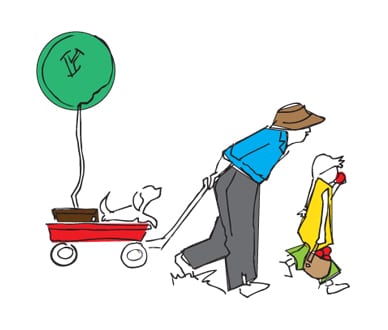 The concept for Grow Community has always been based on an intergenerational community. We imagine a neighborhood where families, young children, singles, retired couples, and elders all live in homes that suit their needs. But not only that, the community, in it’s physical and social design is intended to encourage interactions amongst all these residents. We imagine a neighborhood where relationships are formed, spontaneously and intentionally, where young and old play together in the garden, share experiences and care for each other.
The concept for Grow Community has always been based on an intergenerational community. We imagine a neighborhood where families, young children, singles, retired couples, and elders all live in homes that suit their needs. But not only that, the community, in it’s physical and social design is intended to encourage interactions amongst all these residents. We imagine a neighborhood where relationships are formed, spontaneously and intentionally, where young and old play together in the garden, share experiences and care for each other.
To explore what this type of community might look like, we held a workshop last month. In our workshop we asked folks to ‘backcast’ – imagining that they were living at Grow already and they sent a postcard to a loved one about the community. Here is what they wrote.
Ani – you will love my new house/life in Grow. We have soup night every month and I am a driver volunteer taking people to the ferry, store, etc. in the community electric car. I babysit for a 6 and 8 year after school they live 2 houses down – so much to do in the neighborhood. I lead a writing group at our converted “Grow House” every week. I’m gardening and eat what I grow – finally. Still live a walkable life like I used to, but best is my carbon footprint is about zero. Yay! Mama
Dear Racheal, Can’t wait to have you visit when we move to our new community in Winslow (growbainbridge.org). You will really appreciate the very ecological building and the intentional community aspects. Love Kate PS – Check out the One Planet Principles – you would love it.
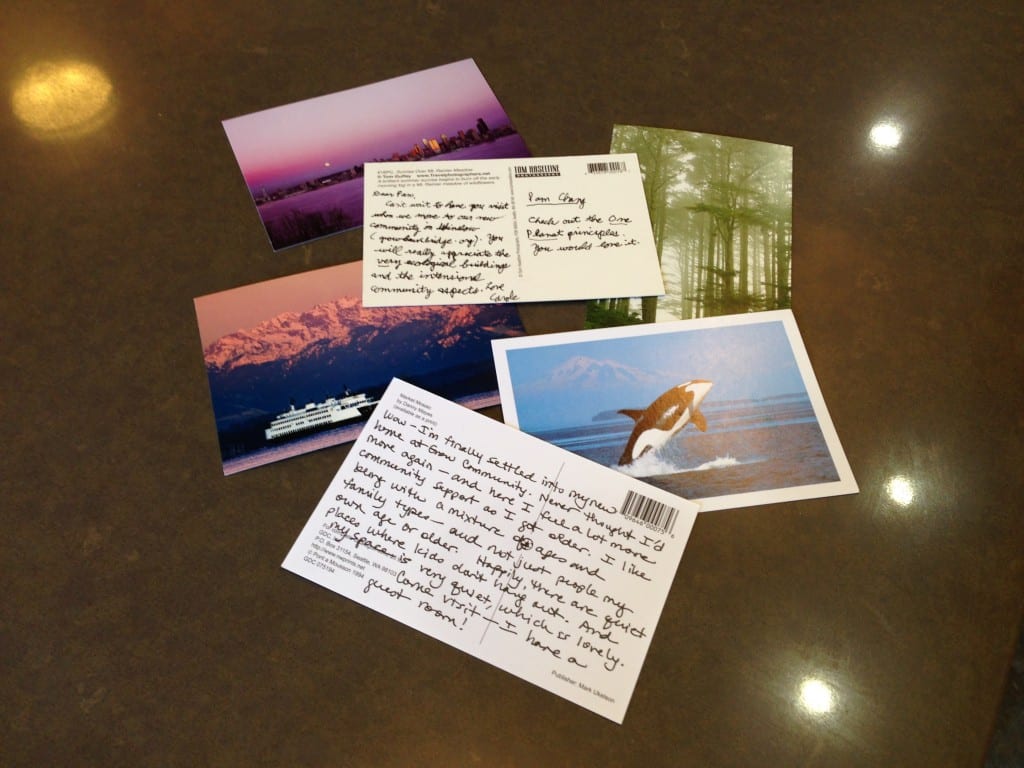 Dear Gabby, We’re looking forward to your visit with Ava (still our only beloved granddaughter). Ava will meet other kids her age, and we can all spend some time working in the garden. The families in our immediate neighborhood will come together for a potluck during your visit, so we’ll be cooking together. There’s usually some music and dancing before the evening is over. Cheers, Dad
Dear Gabby, We’re looking forward to your visit with Ava (still our only beloved granddaughter). Ava will meet other kids her age, and we can all spend some time working in the garden. The families in our immediate neighborhood will come together for a potluck during your visit, so we’ll be cooking together. There’s usually some music and dancing before the evening is over. Cheers, Dad
Wow – I’m finally settled into my new home at Grow Community. Never thought I’d move again – and here I feel a lot more community support as I got older. I like being with a mixture of ages and family types – and not just people my own age or older. Happily, there are quiet places where kids don’t hang out. And my space is very quiet, which is lovely. Come visit – I have a guest room!
Dear Lisa, I can’t wait for you to come visit pops and me at Grow Community. We’ll celebrate your birthday in our community room, pick tomatoes in the garden, listen for frogs in the pond, walk to town for a cookie, then take the gerry to Seattle and ride the wheel. We’ll read books together in our cozy apartment and we’ll check out bikes to ride from our shared bike barn. Lots to do together. Love Mama B
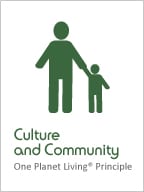 We are constantly using words like inclusivity, walkability, visitability and (of course) sustainability in our conversations about how we design, build, and create opportunity for community to take hold in a place. Considering all these words and all our hopes and dreams to incorporate in one place can be quite a challenge… and one we are thankful to be undertaking. This is made easier with ideas from our community.
We are constantly using words like inclusivity, walkability, visitability and (of course) sustainability in our conversations about how we design, build, and create opportunity for community to take hold in a place. Considering all these words and all our hopes and dreams to incorporate in one place can be quite a challenge… and one we are thankful to be undertaking. This is made easier with ideas from our community.
The next buildings we construct will be designed to take this intergenerational concept to the next level. The beginning of an idea has taken shape as we’ve listened to your feedback. A building based on Universal Design principles, with one-level flats, accessible spaces, comfortable spaces, spaces designed for people of all ages.
Couldn’t make the workshop, but have some ideas to share? Please share your thoughts by clicking the comments link above. No idea is a bad idea! We look forward to hearing from you.
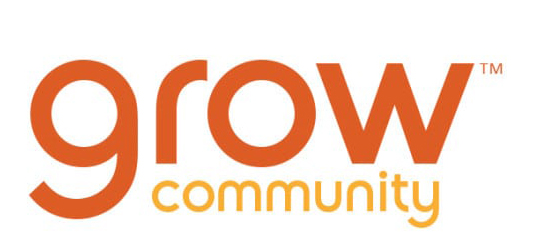
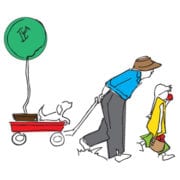
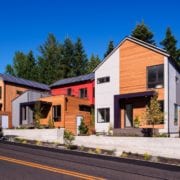
 One Planet Living is a global initiative launched by the World Wildlife Fund and environmental consultancy BioRegional that promotes zero-carbon emissions, zero waste and car-free cities.
One Planet Living is a global initiative launched by the World Wildlife Fund and environmental consultancy BioRegional that promotes zero-carbon emissions, zero waste and car-free cities.
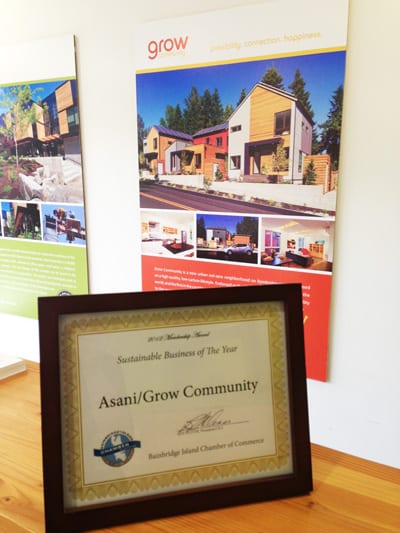
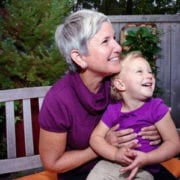

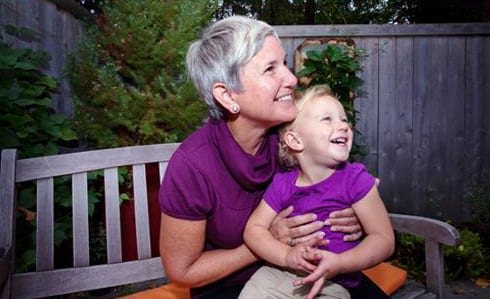

 We, the Grow Team would like to wish you all a wonderful holiday season! As the days get colder and the holidays are upon us we would like to take a moment to reflect on the past year. In 2012 we opened our first three model homes to the community for tours and are now underway with construction of the next 20 homes and 20 rentals that will make up the first phase of Grow Community. After the New Year the first residents will be moving in and calling Grow home. The Grow Team has been working behind the scenes on this project for over two years now and it is wonderful to finally see the community begin to come together.
We, the Grow Team would like to wish you all a wonderful holiday season! As the days get colder and the holidays are upon us we would like to take a moment to reflect on the past year. In 2012 we opened our first three model homes to the community for tours and are now underway with construction of the next 20 homes and 20 rentals that will make up the first phase of Grow Community. After the New Year the first residents will be moving in and calling Grow home. The Grow Team has been working behind the scenes on this project for over two years now and it is wonderful to finally see the community begin to come together.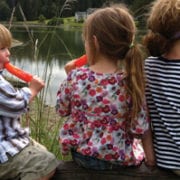
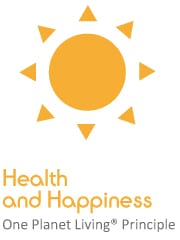 The following is part of our Five Minute Lifestyle series. Living at Grow Community makes getting out your car easy with all of your local amenities and transportation needs met within a quick 5 minute walk or bike ride away. Our Five Minute Lifestyle posts are dedicated to spotlighting nearby local businesses, transportation options for residents, community resources and the spectacular local attractions of Bainbridge Island and our surrounding community.
The following is part of our Five Minute Lifestyle series. Living at Grow Community makes getting out your car easy with all of your local amenities and transportation needs met within a quick 5 minute walk or bike ride away. Our Five Minute Lifestyle posts are dedicated to spotlighting nearby local businesses, transportation options for residents, community resources and the spectacular local attractions of Bainbridge Island and our surrounding community.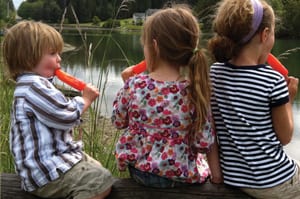 As a 12-year-old, I remember well the territory I was comfortable exploring on my bike with friends and siblings. We could ride on a dirt path from the residential road through an empty lot to the usually vacant parking lot behind Safeway. The empty lot had little hills that helped us hone our bike handling skills. And the Safeway store offered us refunds for empty bottles and plenty of ways to spend the new cash.
As a 12-year-old, I remember well the territory I was comfortable exploring on my bike with friends and siblings. We could ride on a dirt path from the residential road through an empty lot to the usually vacant parking lot behind Safeway. The empty lot had little hills that helped us hone our bike handling skills. And the Safeway store offered us refunds for empty bottles and plenty of ways to spend the new cash. Going somewhere and buying something… that is what grown-ups do. So isn’t it the Holy Grail of freedom for a kid to be able to get somewhere by themselves and purchase something of high kid-value? How many parents with school-aged children in your neighborhood would think it safe to send their kids to the grocery store alone? Architect Ross Chapin is an advocate of small scale communities. In his book “Pocket Neighborhoods”, Chapin describes what he calls the “Popsicle Index” – the percentage of people who think it is safe to let their kid walk to a store and buy a Popsicle without adult supervision.
Going somewhere and buying something… that is what grown-ups do. So isn’t it the Holy Grail of freedom for a kid to be able to get somewhere by themselves and purchase something of high kid-value? How many parents with school-aged children in your neighborhood would think it safe to send their kids to the grocery store alone? Architect Ross Chapin is an advocate of small scale communities. In his book “Pocket Neighborhoods”, Chapin describes what he calls the “Popsicle Index” – the percentage of people who think it is safe to let their kid walk to a store and buy a Popsicle without adult supervision.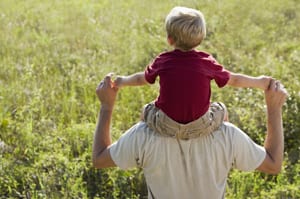 heck out ‘5 Minute Neighborhood for Kids’ also written by Leslie Schneider
heck out ‘5 Minute Neighborhood for Kids’ also written by Leslie Schneider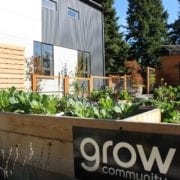
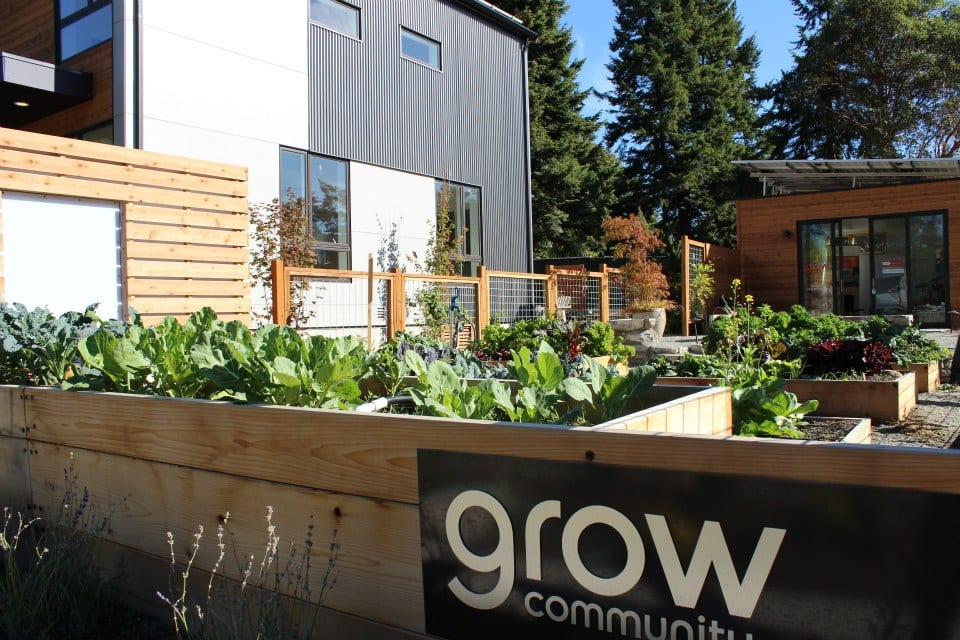 I believe that the network of community Gardens built into the overall design of the Grow Community is the key piece that can make this innovative concept work. Community gardens/farms take teamwork and community involvement to run. They will serve to connect neighbors in Grow with each other, and with the surrounding community.
I believe that the network of community Gardens built into the overall design of the Grow Community is the key piece that can make this innovative concept work. Community gardens/farms take teamwork and community involvement to run. They will serve to connect neighbors in Grow with each other, and with the surrounding community.

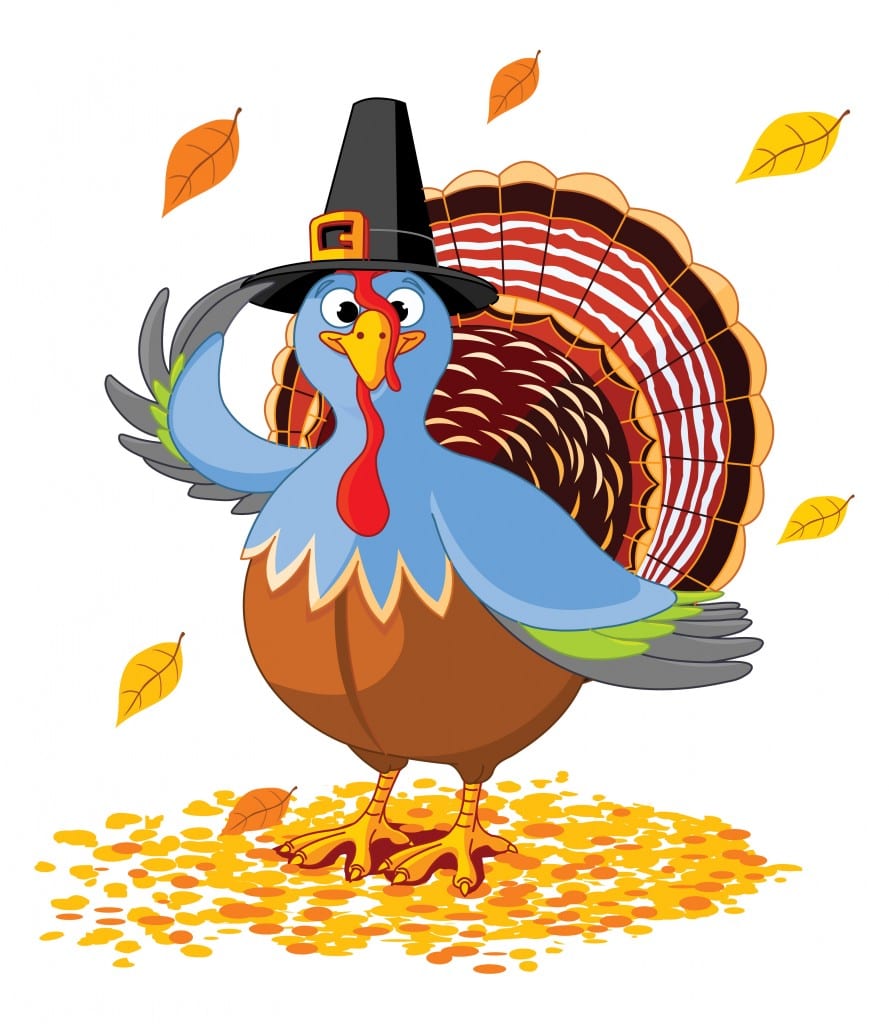 Our neighbor, the
Our neighbor, the 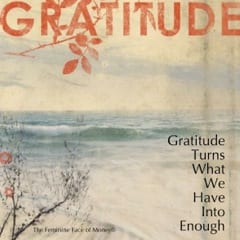 November can be a time for quiet introspection in the form of gratitude and thankfulness, a time to look at what is around us and really appreciate the bountifulness of our lives and those whom we love. We all impact each other each and every day, and it is a good time of the year to reflect on this, and the gratitude that we have towards what is so fortunate in our lives.
November can be a time for quiet introspection in the form of gratitude and thankfulness, a time to look at what is around us and really appreciate the bountifulness of our lives and those whom we love. We all impact each other each and every day, and it is a good time of the year to reflect on this, and the gratitude that we have towards what is so fortunate in our lives.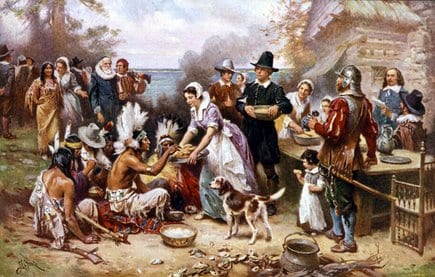 So, in 1621, when these so-called pilgrims sat down at the table with the Wampanoag at Plymouth Colony, very important things happened besides just eating. It was the background for cultural exchange, for friendship building that crossed over differences, a vital concept that we are still working on in our culture to this day.
So, in 1621, when these so-called pilgrims sat down at the table with the Wampanoag at Plymouth Colony, very important things happened besides just eating. It was the background for cultural exchange, for friendship building that crossed over differences, a vital concept that we are still working on in our culture to this day.
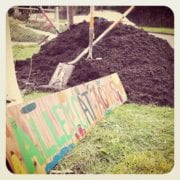
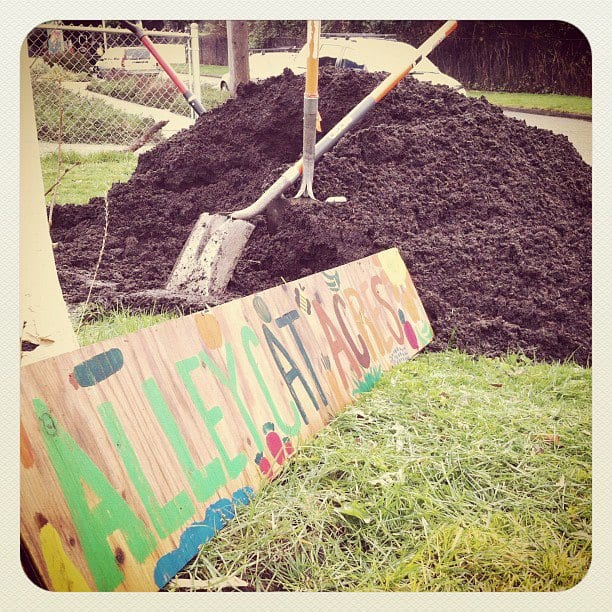 Our farms serve as community meeting grounds – allowing places for people who’d never normally meet to do just that — all while growing a healthier future. In the two years we’ve been growing, there’s been over 3,000 pounds of food harvested from all of the farms by the hands of more than 1,000 newly made friends – many of whom never have stepped foot on a farm or in a garden. All that produce that was grown? It went right back to everyone who helped it grow, along with one of three neighborhood based food banks that are close to each farm which is delivered by bicycle.
Our farms serve as community meeting grounds – allowing places for people who’d never normally meet to do just that — all while growing a healthier future. In the two years we’ve been growing, there’s been over 3,000 pounds of food harvested from all of the farms by the hands of more than 1,000 newly made friends – many of whom never have stepped foot on a farm or in a garden. All that produce that was grown? It went right back to everyone who helped it grow, along with one of three neighborhood based food banks that are close to each farm which is delivered by bicycle.